Abstract
A WHO collaborative study on viral hepatitis B in which 21 laboratories in 20 countries participated is described. The aim of the study was to define the prevalence of hepatitis B surface antigen (HBsAg), its subtypes, and its antibody (anti-HBs) by age and sex and urban or rural residence in normal populations in different parts of the world. High-risk groups in the populations and patients with various diseases were also investigated. The results of the study confirmed that HBsAg and anti-HBs prevalence rates were higher in African and Asian countries than in the Americas, Australia, and northern and central Europe. Some eastern and southern European countries, however, were also shown to have high HBsAg and anti-HBs prevalence rates, comparable with those in Africa and Asia. In countries with low HBsAg and anti-HBs prevalence, there seems to be a gradual build-up during late childhood or early adolescence, whereas in countries with high HBsAg and its antibody prevalence, they were frequently detected in preschool children. Although the trend was towards a higher frequency of HBsAg and anti-HBs in urban than in rural and in male than in female populations, the differences were in most cases not significant. On the other hand, a significantly higher prevalence of markers of hepatitis B virus infection was seen in high-risk population groups than in normal populations. This was, however, clearly defined only in areas with low HBsAg and anti-HBs prevalence in the normal population. The geographical distribution of HBsAg subtypes showed a higher prevalence of the ad subdeterminant over ay in central European countries, whereas in eastern and southern Europe the ay subtype predominated. In West Africa, ayw was the only variant found, whereas in East Africa ad occurred more frequently than ay. In Australia, both adw and ayw subtypes were detected, whereas in the Far East and South-east Asia only adw and adr were seen.
Full text
PDF
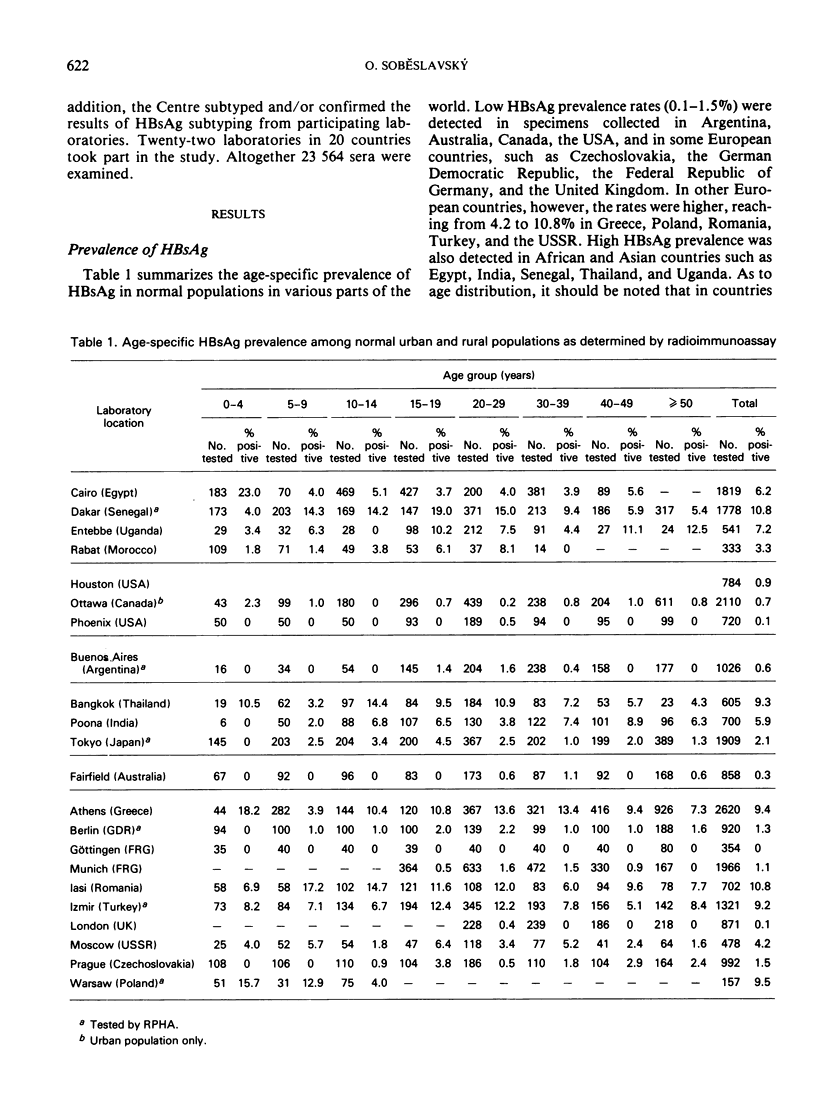
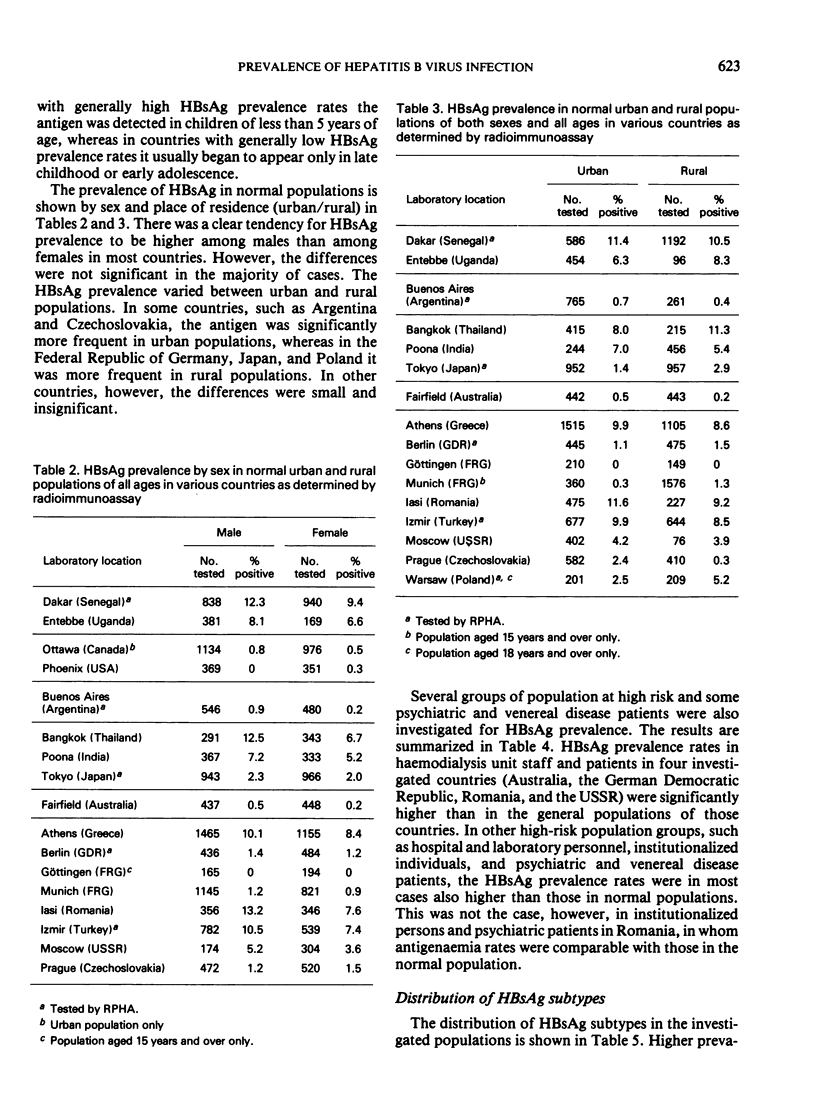

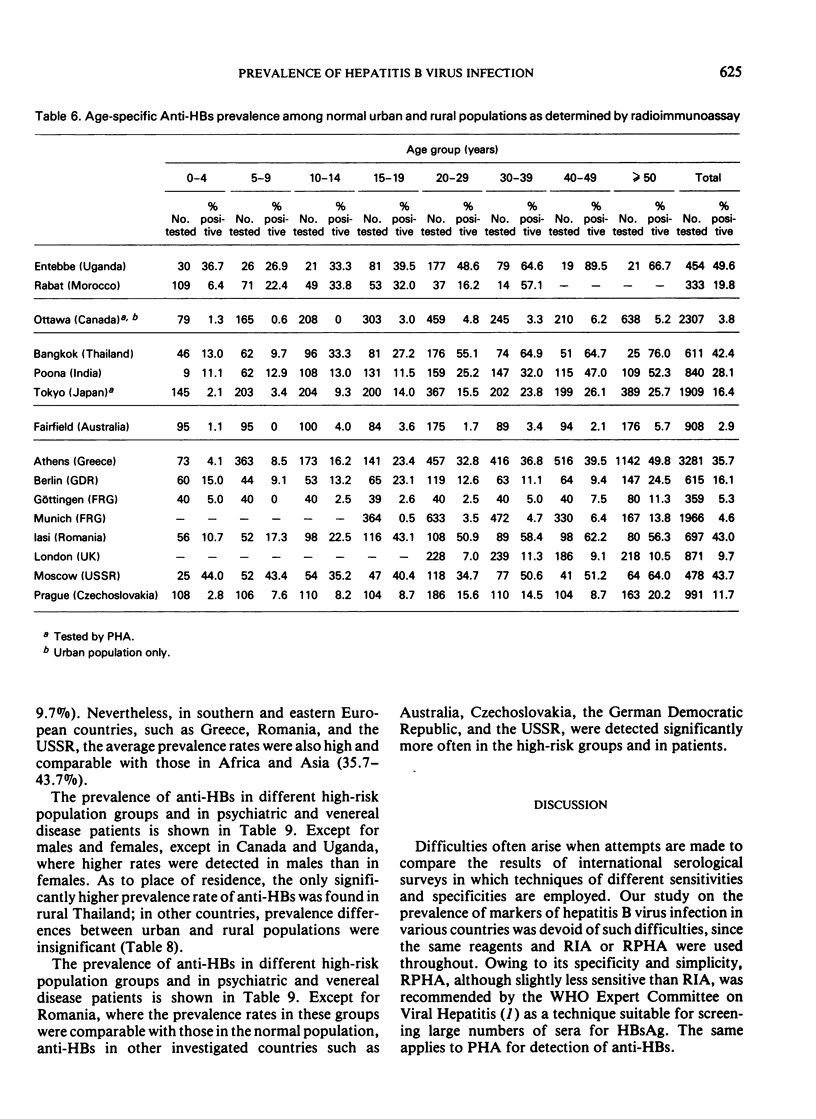
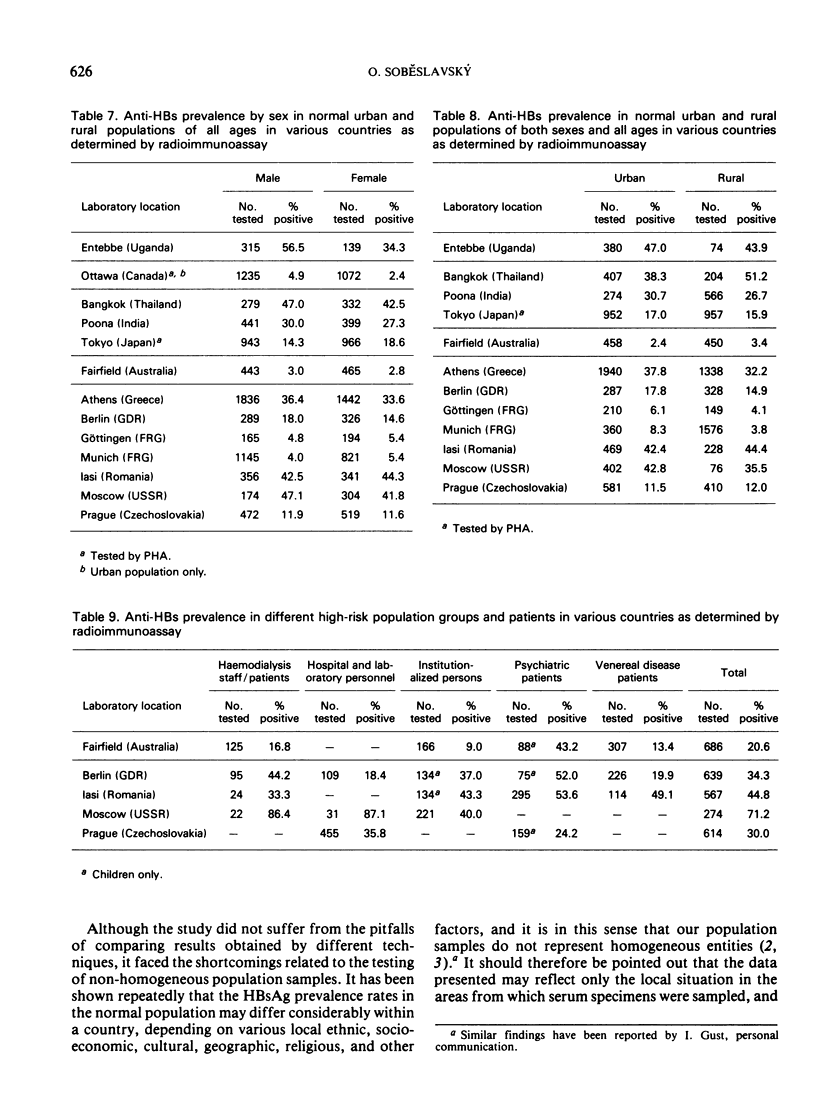
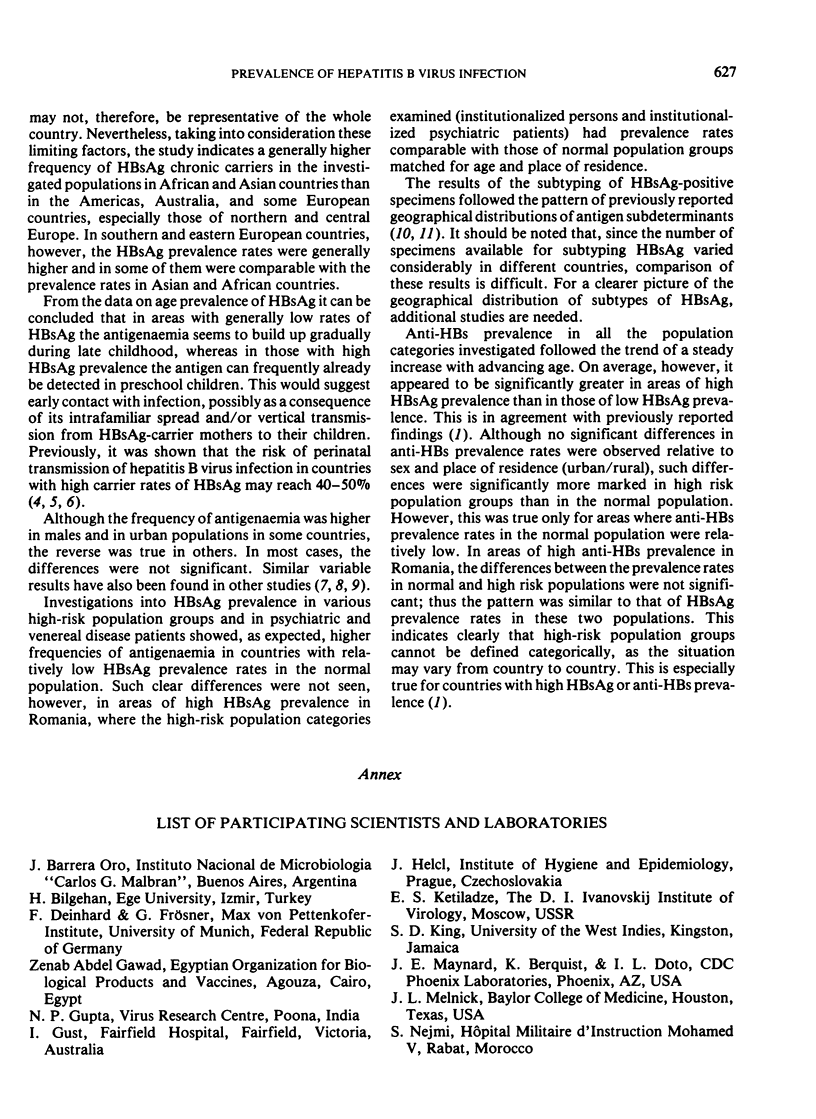

Selected References
These references are in PubMed. This may not be the complete list of references from this article.
- Nishioka K., Levin A. G., Simons M. J. Hepatitis B antigen, antigen subtypes, and hepatitis B antibody in normal subjects and patients with liver disease. Bull World Health Organ. 1975;52(3):293–300. [PMC free article] [PubMed] [Google Scholar]
- Oudart J. L., Roffi J. Antigene HBs dans les populations rurales du Senegal. Med Trop (Mars) 1978 Sep-Oct;38(5):565–573. [PubMed] [Google Scholar]
- Papaevangelou G., Hoofnagle J., Kremastinou J. Transplacental transmission of hepatitis-B virus by symptom-free chronic carrier mothers. Lancet. 1974 Sep 28;2(7883):746–748. doi: 10.1016/s0140-6736(74)90942-8. [DOI] [PubMed] [Google Scholar]
- Prince A. M. Prevalence of serum-hepatitis-related antigen (SH) in different geographic regions. Am J Trop Med Hyg. 1970 Sep;19(5):872–879. doi: 10.4269/ajtmh.1970.19.872. [DOI] [PubMed] [Google Scholar]
- Szmuness W., Prince A. M., Diebolt G., Leblanc L., Baylet R., Masseyeff R., Linhard J. The epidemiology of hepatitis B infections in Africa: results of a pilot survey in the Republic of Senegal. Am J Epidemiol. 1973 Aug;98(2):104–110. doi: 10.1093/oxfordjournals.aje.a121535. [DOI] [PubMed] [Google Scholar]
- Szmuness W. Recent advances in the study of the epidemiology of hepatitis B. Am J Pathol. 1975 Dec;81(3):629–650. [PMC free article] [PubMed] [Google Scholar]


